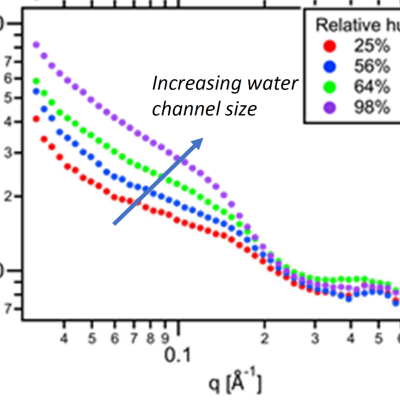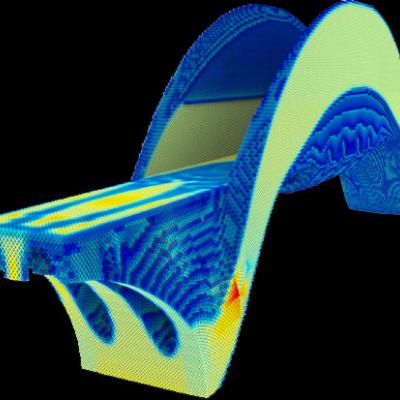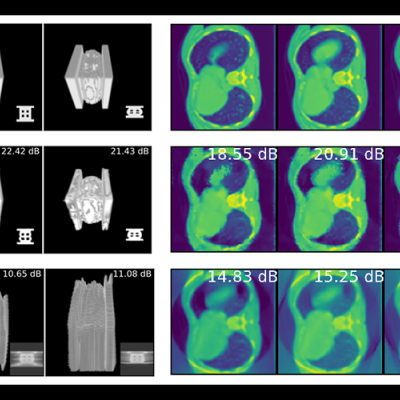LLNL’s Distributed Implicit Neural Representation (DINR) is a novel approach to 4D time-space reconstruction of dynamic objects. DINR is the first technology to enable 4D imaging of dynamic objects at sufficiently high spatial and temporal resolutions that are necessary for real world medical and industrial applications.
Keywords
- Show all (68)
- Synthesis and Processing (20)
- Additive Manufacturing (7)
- Materials for Energy Products (6)
- Data Science (5)
- Cybersecurity (4)
- Material Design (4)
- Imaging Systems (3)
- 3D Printing (2)
- Computing (2)
- Rare Earth Elements (REEs) (2)
- Simulation (2)
- Additively Manufactured (AM) Optics (1)
- Direct Air Capture (1)
- Magnet Compositions (1)
- Material Characterization (1)
- Multilayers (1)
- Structural Materials (1)
- (-) Analysis (2)
- (-) Membranes (2)
- (-) Information Technology (1)

LLNL researchers have developed a method to enhance the performance of polyelectrolyte membranes by using a humidity-controlled crosslinking process which can be applied to precisely adjust the water channels of the membrane.

The LiDO code combines finite element analysis, design sensitivity analysis and nonlinear programming in a High-Performance Computing (HPC) environment that enables the solution of large-scale structural optimization problems in a computationally efficient manner. Currently, the code uses topology optimization strategies in which a given material is optimally distributed throughout the domain…

LLNL has developed a new active memory data reorganization engine. In the simplest case, data can be reorganized within the memory system to present a new view of the data. The new view may be a subset or a rearrangement of the original data. As an example, an array of structures might be more efficiently accessed by a CPU as a structure of arrays. Active memory can assemble an alternative…

LLNL researchers have developed an alternative route to protective breathable membranes called Second Skin technology, which has transformative potential for protective garments. These membranes are expected to be particularly effective in mitigating physiological burden.
For additional information see article in Advanced Materials “Ultrabreathable and Protective Membranes with Sub-5…


